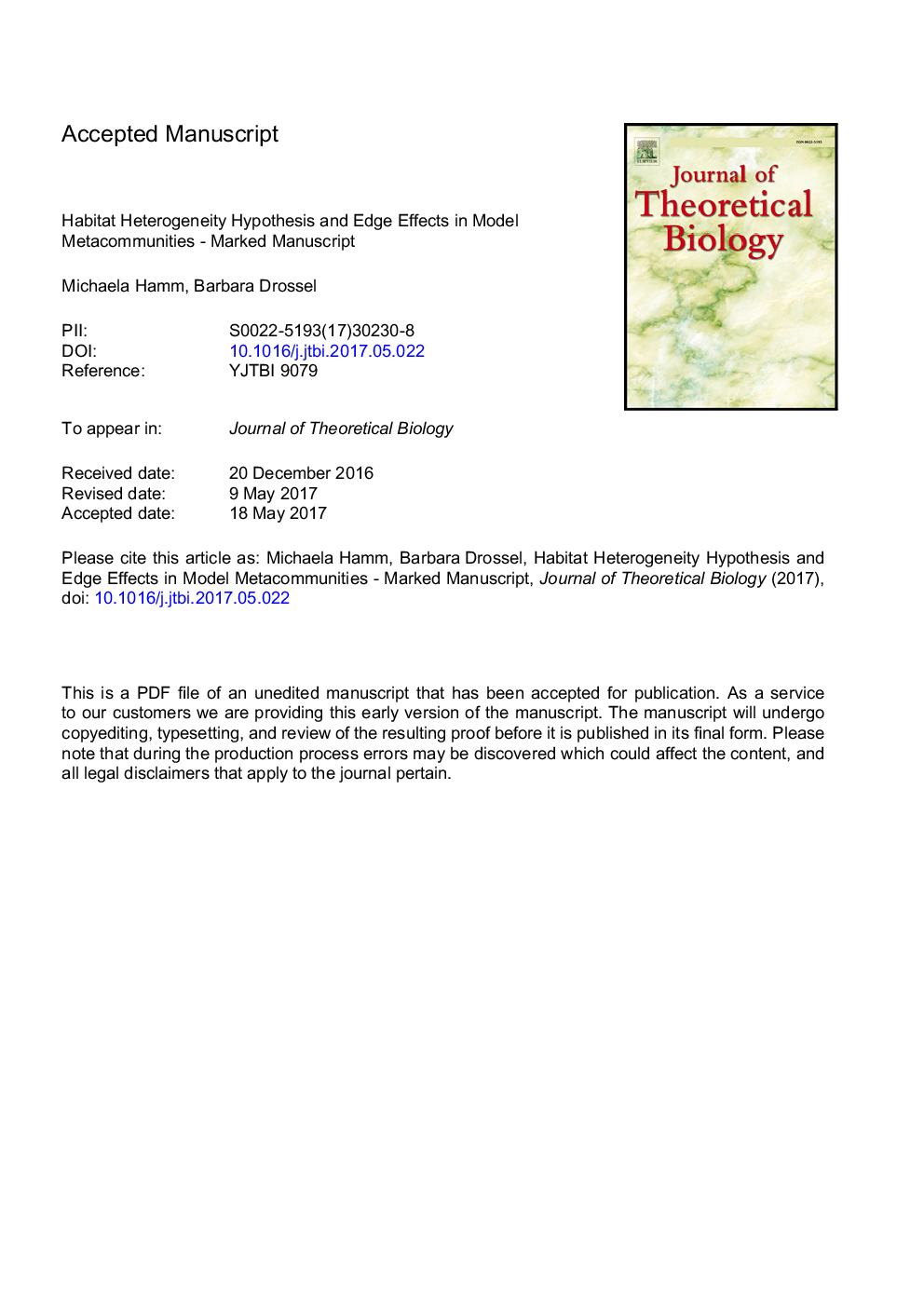| کد مقاله | کد نشریه | سال انتشار | مقاله انگلیسی | نسخه تمام متن |
|---|---|---|---|---|
| 5759943 | 1623784 | 2017 | 14 صفحه PDF | دانلود رایگان |
عنوان انگلیسی مقاله ISI
Habitat heterogeneity hypothesis and edge effects in model metacommunities
ترجمه فارسی عنوان
فرضیه ناهمگنی حادثه و اثرات لبه در متاکومونیت مدل
دانلود مقاله + سفارش ترجمه
دانلود مقاله ISI انگلیسی
رایگان برای ایرانیان
کلمات کلیدی
اکوتون وب غذایی، دینامیک جمعیت، شبیه سازی،
موضوعات مرتبط
علوم زیستی و بیوفناوری
علوم کشاورزی و بیولوژیک
علوم کشاورزی و بیولوژیک (عمومی)
چکیده انگلیسی
Spatial heterogeneity is an inherent property of any living environment and is expected to favour biodiversity due to a broader niche space. Furthermore, edges between different habitats can provide additional possibilities for species coexistence. Using computer simulations, this study examines metacommunities consisting of several trophic levels in heterogeneous environments in order to explore the above hypotheses on a community level. We model heterogeneous landscapes by using two different sized resource pools and evaluate the combined effect of dispersal and heterogeneity on local and regional species diversity. This diversity is obtained by running population dynamics and evaluating the robustness (i.e., the fraction of surviving species). The main results for regional robustness are in agreement with the habitat heterogeneity hypothesis, as the largest robustness is found in heterogeneous systems with intermediate dispersal rates. This robustness is larger than in homogeneous systems with the same total amount of resources. We study the edge effect by arranging the two types of resources in two homogeneous blocks. Different edge responses in diversity are observed, depending on dispersal strength. Local robustness is highest for edge habitats that contain the smaller amount of resource in combination with intermediate dispersal. The results show that dispersal is relevant to correctly identify edge responses on community level.
ناشر
Database: Elsevier - ScienceDirect (ساینس دایرکت)
Journal: Journal of Theoretical Biology - Volume 426, 7 August 2017, Pages 40-48
Journal: Journal of Theoretical Biology - Volume 426, 7 August 2017, Pages 40-48
نویسندگان
Michaela Hamm, Barbara Drossel,
